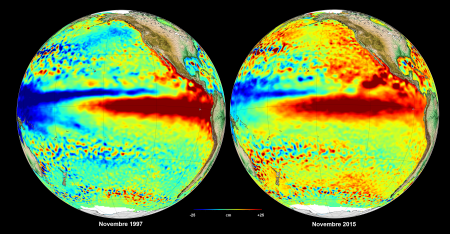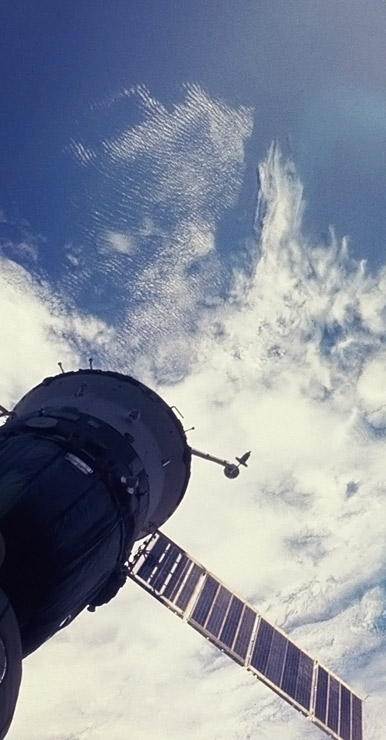Since 1997, El Niño had not reappeared with such intensity.
El Niño 1997-2015: on these maps we can see that the extended surface area of warm water in 2015 is bigger than in 1997. © AVISO/CNES/CLS
This seasonal equatorial current owes its name to a very particular phenomenon. Shortly before Christmas, the anniversary of the birth of baby Jesus (El Niño), a warm current literally makes the fish in Peruvian waters disappear. El Niño is a large scale Ocean phenomenon in the equatorial Pacific which affects the wind system, the sea temperature and precipitation. Vinca Rosmorduc, an engineer from the CLS Space oceanography department, explains this 2015 episode: “You can see it very clearly on our maps. The rise in sea temperature causes the water to dilate and thus sea level to rise. This is what we’ve observed at CLS.
Thanks to these observations, we are able to clearly track the El Niño phenomenon. On the maps for September we can already see that the warm waters of El Niño are higher than in 1997. It is important to measure the intensity of this phenomenon since it causes drought in Indonesia (causing fires) and precipitation in south America (floods, landslides). The more intense this phenomenon, the greater its consequences for populations. CLS makes all the information available free-of -charge on the CNES site, aviso+, for all international stakeholders involved in risk management. It is quite obvious that this 2015 episode is a major climate event of the 21st-century”.



